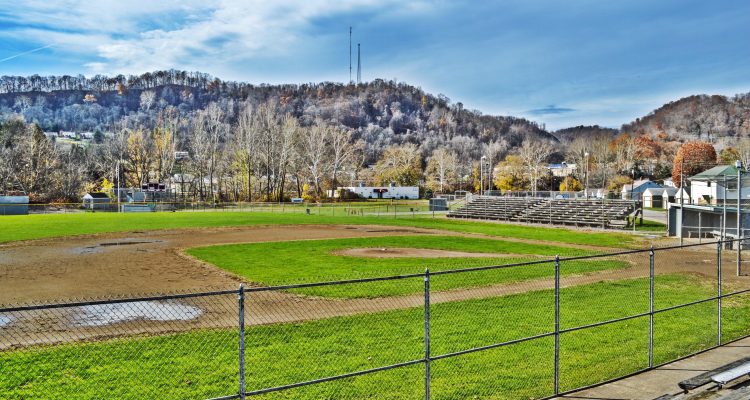Playing baseball on the big field at the Patterson complex was a huge deal decades ago for local ballplayers, and it remains so for the participants and parents who visit the Friendly City each July for the Edgar Martin Beast of the East Baseball Classic each.
Some Wheeling Council candidates and incumbents are concerned with the condition of that sandlot, now known as the Capt. David Van Camp Memorial Field, and of the others located along Sycamore Avenue in the Elm Grove section of the city. And that’s just one example of the issues communicated by the following 10 Wheeling residents, eight of whom are candidates and two of whom are current members of Wheeling’s City Council.
The rusted fences surrounding neighborhood playgrounds and the outdated equipment and some cracked and crumbling tennis courts are mentioned, and so is the disparity that exists between the fields within the J.B. Chambers I-470 Complex and the others scattered across the city.
And, of course, there is the Wheeling Skatepark, a project spearheaded by Diana Mey, and the J.B. Chambers Recreation Park in East Wheeling, a very popular training ground for local schools and organizations since opening a little more than one year ago. Those facilities are new, and they are fresh based on Wheeling’s history with the development of recreational facilities.
So what is the next direction for the Friendly City’s Recreation Department following the municipality’s Election Day on May 10?
These individuals recently were asked two questions:
- What is your opinion of the city’s public recreational facilities?
And …
- What changes/improvements would you like to see take place in the future, and why?
Each of these residents responded via email and their answers, in their entirety, follow. Their replies are displayed in alphabetical order for both inquiries.
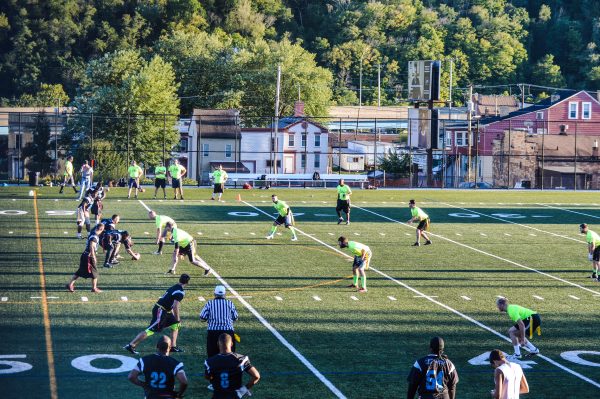
What is your opinion of the city’s public recreation facilities?
Don Atkinson, council member, Ward 5:
There are over 30 facilities within the city of Wheeling, and most do need some upgrading; the tennis courts are OK, and the baseball fields are pretty decent, and that’s because the coaches, parents, and players help keep the fields clean and managed during the season, which, by the way, is awesome. As for the playground equipment, most of it is from the 1980s, and times have changed; we have kept them painted and maintained over the years, and I think four or five have been upgraded; safety codes have changed drastically, and I believe most companies don’t even want to sell swings anymore because of liability issues.
Frank Calabrese, council candidate, Ward 5:
For a city of its size, Wheeling is above average when it comes to the recreation opportunities it provides to its citizens. Despite a modest annual budget of roughly $400,000, the city’s Recreation Department does an outstanding job, thanks to the 41-year leadership of Thomas Bechtel.
Thomas Conner, council candidate, Ward 3:
Wheeling does an excellent job of developing new recreation areas, like the East Wheeling sports complex, but the feedback I have received from Wheeling residents and personal visits I have made to some of the facilities, suggest that there are not widespread problems with the newer facilities, like the skatepark and 470 ballfields. The problems seem to lie in the older, neighborhood parks and playgrounds. Some of the complaints I have heard involve lack of basketball and tennis courts, damaged or missing equipment, and cracked asphalt and other ground coverings. These once vibrant play areas have deteriorated slowly over the years, and they are in dire need of modernization. For now, I would like to see the construction of the Warwood tennis courts expedited.
Glenn Elliott, candidate, Mayor of Wheeling:
Since announcing my candidacy in May, I have visited at least 30 of the city’s public recreation facilities. They are a mixed bag. Some, like the I-470 ballfields and the Elm Grove Skatepark, are terrific facilities in and of themselves, but they are accessible to most residents only by car. The East Wheeling Sports Field is also a terrific facility, but even though it’s situated in the middle of a deserving neighborhood, it remains far more accessible to organized groups and institutions throughout the city than to the children of East Wheeling themselves. And so while these particular facilities look very nice and are well maintained, I am concerned about their accessibility to the children who could benefit most from their use.
Aside from these several newer facilities though, most of our remaining ball fields, tennis courts, and playgrounds fall somewhere on a spectrum between very average and absolutely embarrassing. And that’s probably being generous. For several decades now, for whatever reasons, we have not made these neighborhood parks a priority. And it shows. Some parks haven’t been updated or repaired in decades. When I was visiting the Pleasanton Park, for example, I recognized some of the equipment there from my childhood in the 1970s. Other neighborhood parks appear to have been abandoned or forgotten but continue to exist as weed-ridden, rusting reminders of childhoods long past. That is unacceptable. We can do better.
And so, taken as a whole, I’d probably have to give Wheeling’s public recreation facilities a grade of C- or worse. We have prioritized a few large, fancy facilities at the expense of the more numerous and more accessible pocket parks that used to be the prides of their respective neighborhoods and popular destinations for the children thereof.
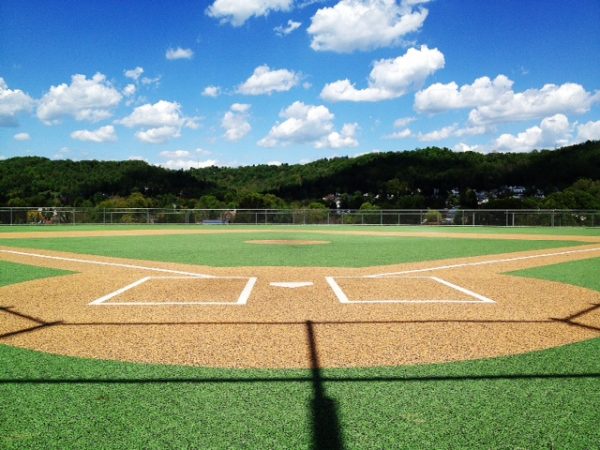
Gene Fahey, council member, Ward 6; candidate, Mayor of Wheeling:
I believe that the City Of Wheeling Public Recreation facilities are at an all-time best for both condition and public use. Just think about the opportunities residents have for recreation here in the City of Wheeling: the J.B. Chamber Recreation complex in East Wheeling offering year-round turf; the Tunnel Green complex offering roller hockey; the Wheeling Skatepark in Elm Grove; the J. B. Chamber I-470 fields; the Pickleball Court at the Patterson complex; Garden Park in Warwood; and please do not forget what I believe is the best trail system in America connecting Elm Grove to downtown and all areas north and south. These are unique opportunities for recreation that you will not find in most cities, and these facilities are of the highest quality. These are just a few, and there are so many others in each and every ward.
Dave Palmer, candidate, Ward 6:
The City of Wheeling’s recreation facilities for the most part are like the city was in general until recently, old and outdated. Granted new additions to the recreation umbrella that include the East Wheeling Complex, the I-470 Ball Fields, and the Skatepark are wonderful, but because of lack of resources we have neglected our older neighborhood recreational areas, and again, like the city in general, some areas need rehabilitated, and some areas may need eliminated. The community must become involved and not only ask the hard questions of what stays and what goes but provide quality recommendations (Let’s be realistic.) to solve our recreational deficiencies. It is then that council should attempt to provide the citizens what they are looking for in recreation facilities.
Wendy Scatterday, candidate, Ward 4:
Wheeling’s recreational facilities and outdoor opportunities are one of our community’s greatest assets. Other communities of our size typically do not have the types of offerings Wheeling has available. Given Oglebay and Wheeling parks as the foundation of our recreational priorities set forth in 1928, Wheeling’s commitment to providing excellent places to play, rest, exercise, and enjoy the outdoors as a community is clearly demonstrated.
Healthy living, high quality of life, easy access to safe, engaging parks, playgrounds, team and individual sport venues, walking, hiking and biking trails as well as connecting to our waterways, and wide-ranging recreational programming activities are the things that people value when choosing a place to live. This priority in choosing a place to live is second only to high quality education systems. As great as the city’s assets of Oglebay, Wheeling Park, and several other parks and facilities are, there are some city-owned playgrounds, parks and sporting venues that are not.
Chad Thalman, candidate, Ward 1:
In the city of Wheeling we are extremely lucky to have some excellent public recreation facilities. While not run directly by the city, Wheeling is the only city to have a completely self-sustaining municipal park system in Oglebay and Wheeling ark. The new field in east Wheeling also comes to mind as a facility we should be proud of. Many of the fields located throughout the city are also nice and well maintained enough to attract the Beast of the East baseball tournament every year.
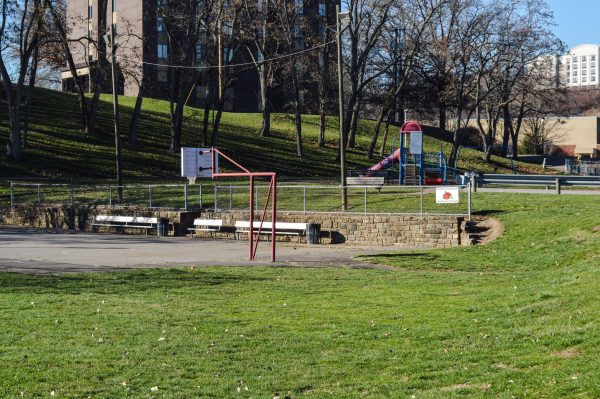
Ty Thorngate, candidate, Ward 5:
In any city, it’s extremely important to have green space and recreational areas where families and children not only come together socially but also come together to improve their health and quality of life. Having a sound public recreation system can revitalize neighborhoods, increase property values, spur economic development, boost tourism, decrease crime and vandalism, and create much-needed community engagement.
Wheeling has been blessed with two wonderful facilities in Oglebay and Wheeling parks. Each park has recently taken steps to modernize and improve its facilities. We’ve built numerous baseball fields along I-470, a state-of-the-art multi-sport complex in East Wheeling, and the only skatepark in the Northern Panhandle; however, Wheeling’s neighborhood and pocket parks have not been as fortunate. Many of the city’s neighborhood and pocket parks have fallen into disrepair with broken swings, outdated equipment, uneven pavement, drug paraphernalia, broken glass and trash. In my view, this is totally unacceptable.
As we move into a city of the 21st century, are we meeting all of our obligations? Are we planning for the future, or are we looking toward the past? I’d like for the readers to ask themselves the following questions:
- Are we currently doing as much as we can?
- Are we currently making Wheeling’s recreational facilities better for its residents?
- Are we currently making Wheeling’s recreational facilities attractive destinations for tourists and visitors?
My answer would be a resounding NO. We’re not doing as much as we can. We’re not making our recreational facilities better for our residents. We’re not making our recreational facilities attractive to tourists . Frankly, I’m not satisfied.
Brian Wilson, candidate, Ward 3:
In my opinion, Wheeling’s parks and playgrounds are not all bad, but they are certainly not all good either. A quick drive around the city will show you that there really seems to be no rhyme or reason to the conditions of our playgrounds. In one area you have a multi-million dollar turf field, and a short distance away there is a basketball court with one hoop. We have an amazing skatepark that is well maintained, and there is a tennis court near North Park that cows could graze on.
Despite what one would expect, it does not seem that the real estate taxes of a neighborhood have much impact on its playground equipment as some of Wheeling’s most desirable neighborhoods have some of the most unsightly parks. With that being said, there is absolutely no reason that every one of our neighborhoods should not have its very own, accessible playground that is kept in good repair. These neighborhood playgrounds are a crucial part of neighborhood livability with a direct link to lower crime rates, higher property values, and neighborhood stabilization. We need to remember that just because we are fortunate enough to have Oglebay and Wheeling parks, that does not mean all of our residents have the time or vehicular means by which to visit them.
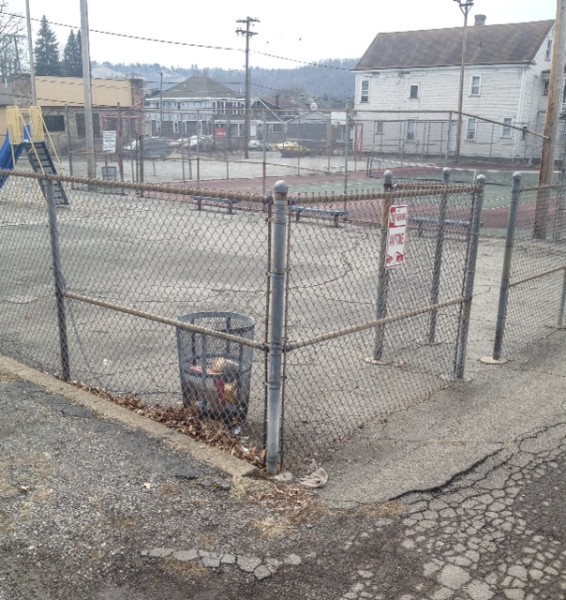
What changes/improvements would you like to see take place in the future, and why?
Atkinson:
The public works department. will be out doing an evaluation of the facilities this winter and spring, and we will have an idea of what’s needed. One thing we all know is this equipment is not cheap, and we can be looking at hundreds of thousands of dollars. I plan on making a recommendation at our upcoming budget meetings to try and set aside some money for all of our recreation facilities.
Calabrese:
People are obviously more important than infrastructure. Now that the infrastructure is in place, I would like to see the adult members of our community mentor our youth. There are many examples of this-coaching, Big Brothers/Big Sisters, YSS, etc. Such mentoring can only create a positive benefit for Wheeling, both now and in the future.
Conner:
In the near future, I believe we need to replace the tennis courts at Mozart Park, which have been removed, and explore installing new tennis and basketball courts in other existing facilities. We also need to research grants, benefactors, or other funding to purchase new playground equipment. Most importantly, we must “ramp up” the repair and maintenance of all of the areas. The last thing we need is for the condition of the newer areas to slowly erode as well. Children in all Wheeling neighborhoods should have a safe and well-maintained place to play.
Elliott:
We need to make neighborhood parks a priority again. And to do so, you have to start by challenging existing thinking about these public resources. The most common misconception about Wheeling’s park system is that because Oglebay and Wheeling parks are terrific, then, by extension, our park system is in great shape. It’s true that these two community gems are in terrific shape. But they are not easily accessible to all children in Wheeling, particularly those in families without cars or with two working parents. Every child deserves reasonable access to a well-designed, well-maintained park.
There’s also a perception that children today simply don’t use parks the way prior generations did. But evidence from across the country shows that demand for municipal parks remains at historical levels. What have changed are children’s preferences. We shouldn’t be surprised that kids don’t want to play on the same playground equipment their parents played on decades ago, particularly on installations that are now rusting and visually depressing. We must design parks around the wants and needs of the children that will use them. Monkeybars or handball courts cater to children of the last century.
We also must make the economic case for neighborhood parks. The real estate market consistently demonstrates that people are willing to pay more for homes located close to parks. Higher property values mean property taxes, and so a portion of the money you spend on parks comes right back.
Lastly, we have to engage the residents of each neighborhood to give their own input on the wants and needs for their community park(s). We have to encourage concerned residents in each neighborhood to step up and get involved in their own park. Many neighborhoods have crime watch meetings already. Why not help set up “park watch” meetings as well?
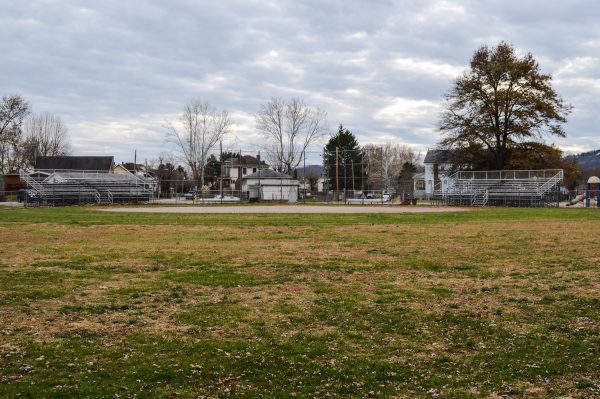
Fahey:
We have our challenges. The culture has certainly changed on what type of facility is needed and used. We still have many old, small neighborhood playgrounds that have either fallen into disrepair or are not utilized at all by the public. The city for the first time did not hire playground instructors in 2015 because of lack of resources as well as lack of interest from the public. I believe we need to do an overall evaluation of these small facilities, closing some and finding the resources to enhance others so that all the facilities have excellent and safe conditions. By doing so, we will ultimately reduce the burden on the taxpayer by having fewer facilities to maintain while creating a better quality of life for our residents.
Palmer:
In Ward 6 the Patterson baseball fields and surrounding areas are in deplorable condition, the playground equipment needs to be kept safe along with maintaining weeds and grass. The largest baseball field plays host to the Beast of the East tournament, but the only upkeep to this field (and the smaller fields) is done by coaches, parents, and other volunteers. This field is the showcase to our out of town guests, yet it becomes totally unplayable with the slightest bit of rain and the bleachers are in great need of repair. This neglect has to stop! Unfortunately the same conditions can be found in Elm Terrace and Overbrook while other neighborhoods in ward 6 have no facilities at all and this is where the community should become involved as I stated above.
I believe a great benefit to our area and our families would be an indoor soccer/lacrosse field and indoor ice hockey facility. Many of our parents have to drive their children to Pennsylvania to participate in these sports during the winter months as our normal winter weather prohibits many outdoor activities. Are these facilities needed? Are they fiscally feasible? I believe we have the expertise in this community to answer these questions and bring great ideas forward. Let’s keep the momentum going, let’s continue to move Wheeling forward, and most importantly let’s provide our children with adequate recreational facilities.
Scatterday:
The City of Wheeling allocates about 7 percent of its annual budget toward ‘recreation’. An increase in that budget priority, even if only modest, would go a long way to focusing on improving the neglected playgrounds, fields and tennis courts that are outdated, in need of significant maintenance, and in many cases requiring safety repairs because of an a ongoing lack of priority for those locations in each Ward. An even greater budget reallocation would allow the city to enhance existing recreational programs, as well as develop new offerings and expand the Heritage trail system to include development of Wheeling Creek for canoeing and kayaking, among other waterway uses.
Every City of Wheeling owned recreational asset must be a place of pride and high use by its citizens. That isn’t the case at present, but it can be with a commitment to reprioritization that comes from seeking the collective input from our community at large and devoting the time, money, and resources to reaching those goals. I’m excited about the possibility of all of our parks, playgrounds, and fields being as welcoming, cared for, and utilized as Oglebay and Wheeling parks.
Thalman:
If elected, I would like to see a better focus on some of the “pocket parks” that are located in just about every neighborhood throughout the city. Many of these parks are rundown and in dire need of an investment from the city. While Garden Park in Warwood is beautiful, there is a handball wall that probably hasn’t been used consistently since the 1970s. I would like to see this handball wall removed and replaced with something that kids today are more interested in using. There are also several tennis courts throughout the city which are not in usable condition. We should determine whether or not these courts need to be repaired or replaced with something that the residents of those neighborhoods would rather have.
Thorngate:
I’d like to see city council call for a revival of all neighborhood and pocket parks. The first step would be to audit each park independently. Find out what people in the neighborhoods would like to see added to their parks. Are the tennis courts being utilized? If not, let’s eliminate them and renovate the areas to generate more activity. The second step would be securing investment. I’d like to see increased investment, both public and private, go toward the following upgrades:
- Updated playground equipment
- Repaved basketball courts
- Basketball hoops
- Emergency kiosks at every playground and on our walking trail
- More garbage and recycling bins
- Updated lighting systems
- Security cameras
- New water fountains
- Updated painting and greenscaping
- Increased police supervision
While city government plays an enormous role in the creation of citywide recreational facilities, the government cannot do the job alone. Achieving these changes will depend on a variety of groups. I’d like to see us continue partnerships with nonprofits like Downtown Wheeling to help with the planning and transactional stages, as well as neighborhood groups and community associations working together with the private sector to design the parks. Finally, we need to tap into the financial support and leadership of community-minded individuals and businesses. The time has come for us to stop ignoring people and recreation. Let’s combine efforts and invest in the future of each citizen and ward in our great city.
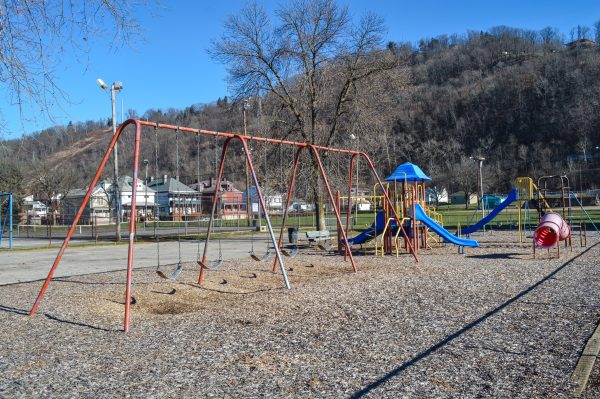
Wilson:
Contrary to popular belief, playgrounds are not just for children. Progressive cities have found ways to give adults “playgrounds” of their own. We, as a city, need to be able to see beyond the slides and monkey bars and embrace our own natural resources such as our creeks and waterways and make those accessible to the people that want to play in them – the kayakers, fishermen, and water sport enthusiasts – most of which are adults.
In my opinion, Wheeling has done an incredible job of shunning its waterways and making it almost impossible to kayak or fish from practically anywhere. I recall a time I took my own kayak from Kroger (a relatively unsanctioned entry point) all the way to the Ohio River. When I finally had to get my kayak from the water, I had to carry it up a small mountain of chunks of street pavement that had been dumped over the hillside. These manmade boulders precariously teetered with every step, waiting to injure me or my friends, all while carrying our boats. And believe it or not, this was the easiest exit point available to us. The fact that there was no dock or staircase was disheartening, to say the least.
We need to leave behind the tired idea that playgrounds are only for children. When young adults or families are looking to relocate, recreational activities are usually a top priority when scoping out a new area. We not only need to maintain and spruce up our existing playgrounds, but we also should be building new ones, and that doesn’t have to include any building acquisition, demolition or lawsuits which, in turn, can keep the price tag out of the millions. For example, I would love to see the former North Park Landfill transformed into a recreation complex complete with running and mountain bike trails, a paintball course, disc golf, and, with its incredible views, zip lines. A nominal fee could be charged for use and would help pay for its own construction and maintenance.
In short, I believe that everybody deserves a place to play. Sometimes this means thinking outside of the box, and sometimes it doesn’t. There is no downside or corner to be cut when you are talking about the happiness of your city’s kids, no matter what their age might be.
(Photos by Steve Novotney)


